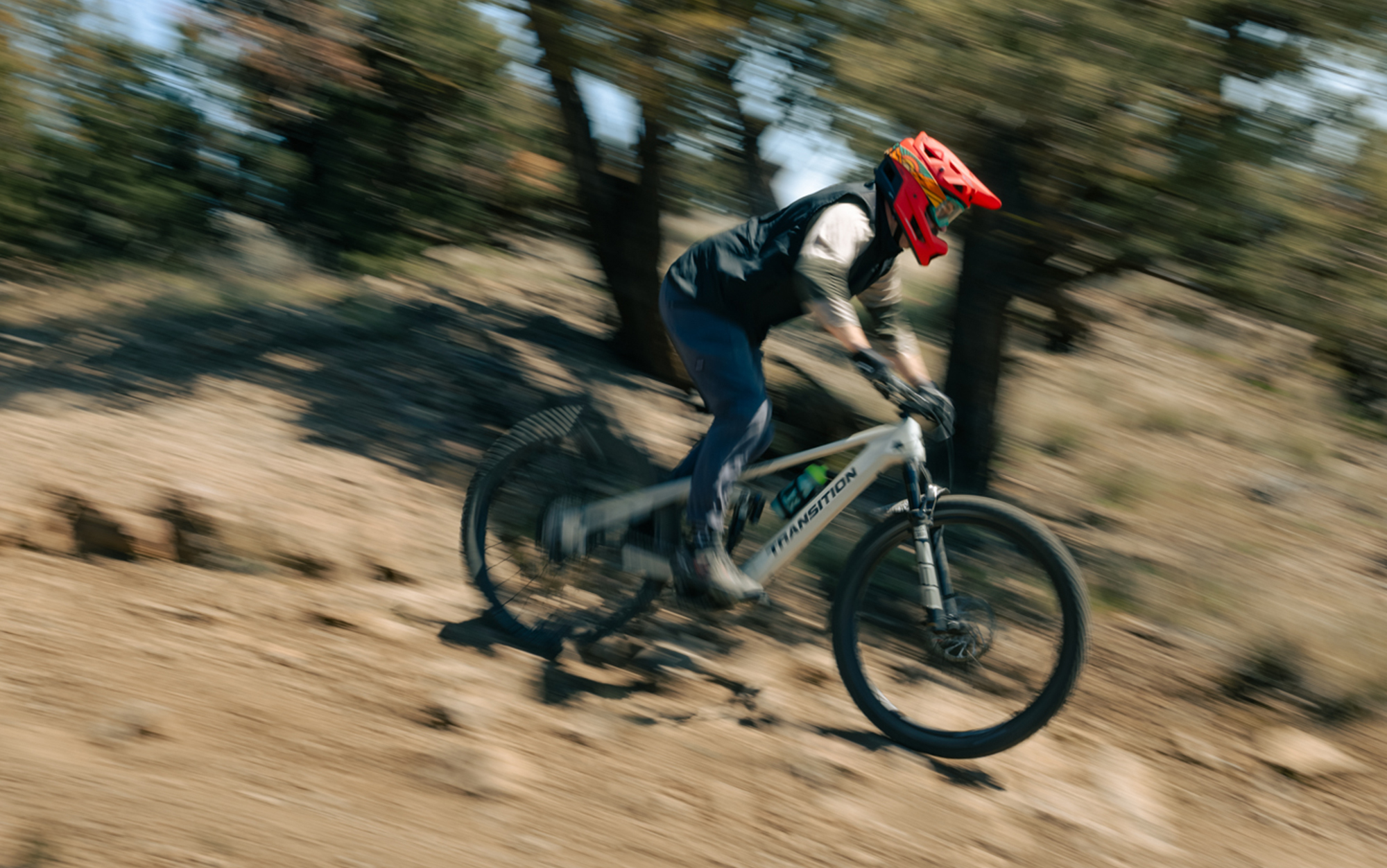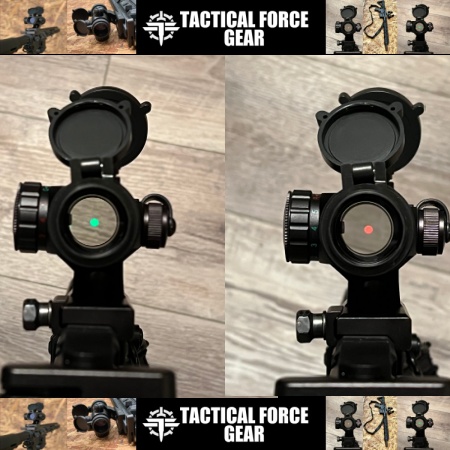We may earn revenue from the products available on this page and participate in affiliate programs. Learn More ›
As mountain biking has evolved over its few decades of existence, different categories of bikes have begun to emerge. Where there was once only one category — mountain bike — bike builders began to realize bikes could be built to serve specific purposes. Trail-capable bike categories branched out, laying a solid foundation that we still follow today.
While some of the differences in these categories are obvious — a cross-country bike and a downhill bike, for example — others are more subtle. While the difference between a bike for longer, flatter cross-country trails and a bike built to bomb downhill is pretty clear-cut, it can be helpful to take a different perspective when considering how to choose a mountain bike.
The Mountain Bike Spectrum
While there are concrete distinctions between each of the mountain bike categories, it is easiest to think of mountain bikes on an ascending and descending spectrum. While any bike can be ridden up or down a hill, specific bikes are designed to excel at each end of the spectrum, and everything in between.
Suspension travel, frame geometry, and even components are all based on what category the mountain bike falls into. Knowing these categories and the bikes that correspond to them is crucial when considering your first, or next, mountain bike purchase. Ensuring the bike you’re considering is designed for your riding style and local trails will significantly impact your riding experience.
Cross-Country Mountain Bikes
On the far left of the ascending side of the spectrum are XC mountain bikes. These bikes have suspension travel, geometry, and component choices that set them apart as the fastest climbers and most efficient pedalers.
XC mountain bikes have the least amount of suspension travel, typically maxing out at 120mm front and rear, although many XC bikes hover around 100mm. Some have no rear travel, as many XC riders still use hardtails — bikes with no rear suspension — because of their pedaling efficiency.
The geometry of an XC bike is all about climbing. The head tube angle (HTA) is steeper, keeping the rider over the front of the bike and allowing for greater control. Reach, chainstays, and wheelbase lengths are all relatively short, keeping the bike compact. Not only does this help keep frames lighter (by using less material), but it also helps keep the bike more maneuverable.
A solid XC bike will also have high-quality, lighter-weight components designed for carrying speed. Tires are a great example. XC tires have a far less aggressive tread pattern and thinner sidewall casing than their gravity-oriented counterparts. Less aggressive tread equals less rolling resistance and more speed.
Read Next: Best Electric Mountain Bikes
Trail Mountain Bikes

Known better simply as trail bikes, these are most likely the bike you’ll end up on. They are the do-it-all mountain bikes, designed to go up the hill just as well as they go down. The head tube angles are commonly a bit more relaxed, or slack, balancing control and climbing efficiency with stability on steep descents. And reach, chainstay, and wheelbase lengths are also a tad longer than those of XC bikes, giving trail bikes more stability on fast descents while remaining playful.
While trail bike components aren’t as concerned with being lightweight, they do look for a good balance of weight savings and durability. With trail bikes being more oriented toward descending than XC bikes, they require more robust components to withstand the abuse. A typical trail bike might weigh 10 pounds more than an XC bike.
Lastly, these bikes are most commonly full suspension, ranging from 120mm to 150mm of rear suspension paired with a 130mm to 160mm fork. That big range of suspension travel is where we get a few subcategories of trail bikes.
Downcountry Bikes
Some call them short-travel trail bikes, others use the term downcountry — a combination of cross-country and downhill. These are on the short end of suspension travel for trail bikes — 120mm to 130mm of travel.
Less travel means more efficient climbing and pedaling, putting these trail bikes closer to the XC side of things. However, things like geometry, component choice, and descending capabilities keep them in the trail bike category.
All-Mountain Bikes
On the opposite end of the trail bike category are all-mountain bikes. These bikes, typically with 150mm of rear travel, blur the line between trail and enduro bikes. While all-mountain bikes can still get you to the top of the hill, they are clearly built for the down.
Read Next: Best Mountain Bikes, Trail Tested
Enduro Bikes

Bigger, longer, and slacker; we’ve entered the descending-focused enduro bike category. However, due to the nature of enduro racing, these bikes still need to go uphill, albeit at a much slower clip than a trail or XC bike.
Enduro bikes will have 160mm to 180mm of rear travel paired with a 170mm to 190mm fork. Enduro races are timed on the descent, so racers need quite a bit of travel to survive the impacts thrown at them. However, enduro racers then have to pedal to the top of the race’s next stage, so having a bike that can still climb is essential.
These bikes will be even slacker and longer than trail bikes. A slack head tube angle helps push the rider back on the bike on steep descents, creating more confidence. Longer chainstays and wheelbase create a more stable platform on chunky, high-speed sections.
While enduro racers still have to climb to the top of race stages, component durability certainly trumps weight savings. The components on an enduro bike need to withstand significant impacts and high speeds, making them slightly heavier than most trail bikes.
Downhill Bikes

The name says it all. These bikes are built for going downhill. Needing to withstand the gnarliest of trails and the fastest speeds, DH bikes have suspension travel numbers north of 190mm.
While their geometry may be just a touch slacker and longer than enduro bikes, DH bikes will not be fun going uphill. Component choices such as a dual-crown fork (needed when fork travel exceeds 190mm), a seven-speed cassette, and the lack of a dropper seatpost make climbing on them nearly impossible.
Oh, and their weight doesn’t help either. Uphill on these bikes involves a chairlift. But point one down the mountain, and you will quickly realize there is no mountain bike experience like riding a DH bike.
What Mountain Bike Should You Choose?
If you’re in the market for a new mountain bike, consider your riding style and local trails before choosing a bike. For example, something like a long-travel enduro bike looks cool, but if you don’t have properly steep trails, an enduro bike will be boring. All that travel will drown out the trail’s character, and the bike may feel like a slug. Think of where you fall on the ascending/descending spectrum and buy accordingly.
Another important fact to remember is that you can always rent a bike. If you only ride a lift-access bike park a few times a year, don’t buy an enduro or DH bike as your only option. While those types of bikes are great at bike parks, they might be too much (the DH bike will be) on your local trails. Bike parks typically have good rental options, and you won’t have to worry about your bike getting beat up.
See you on the trails!
Read the full article here




